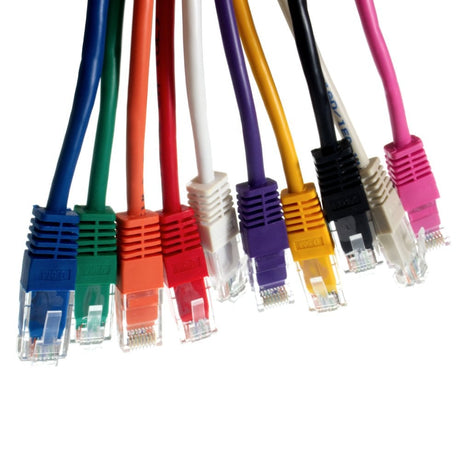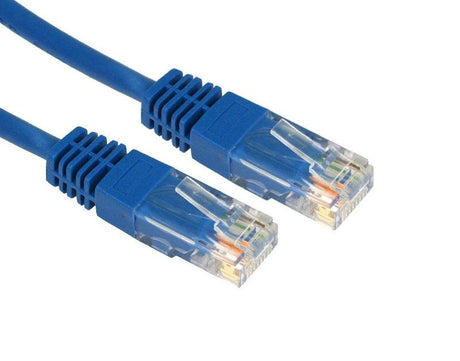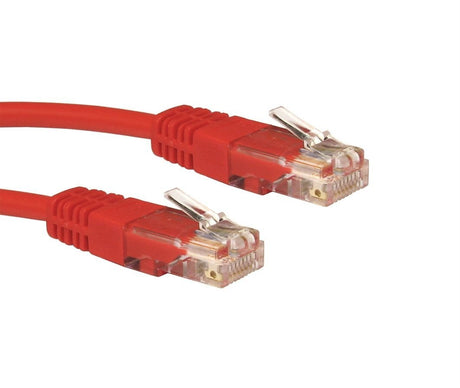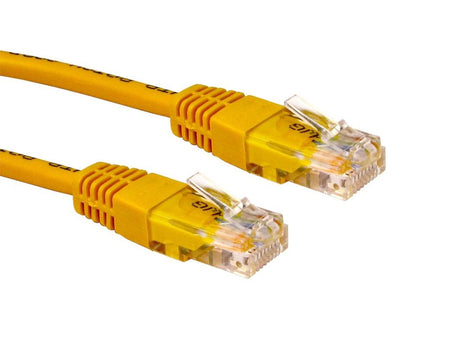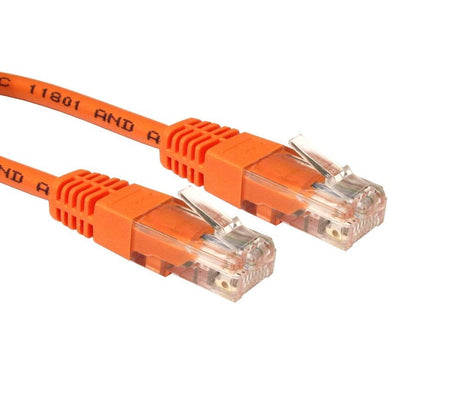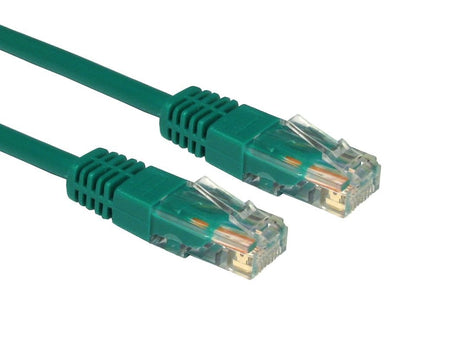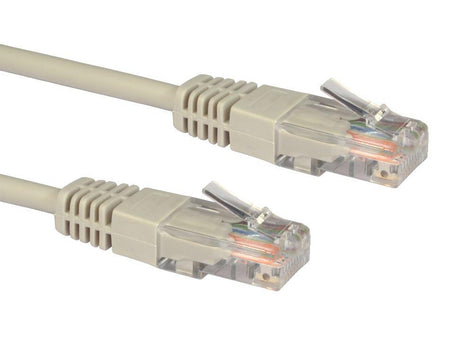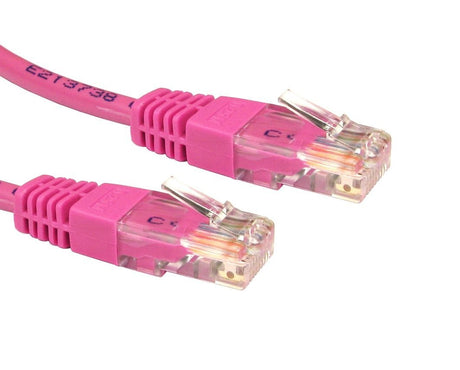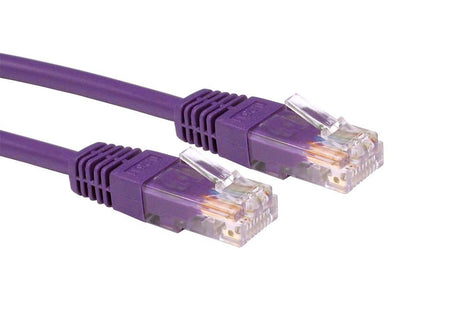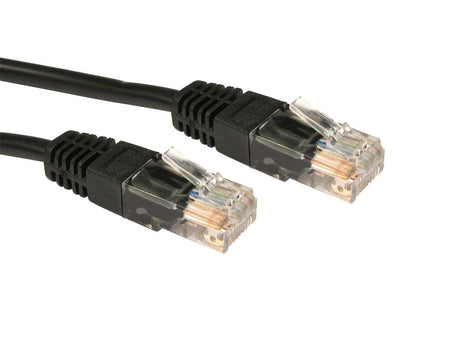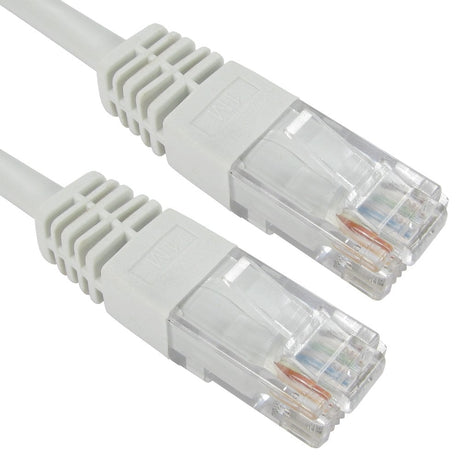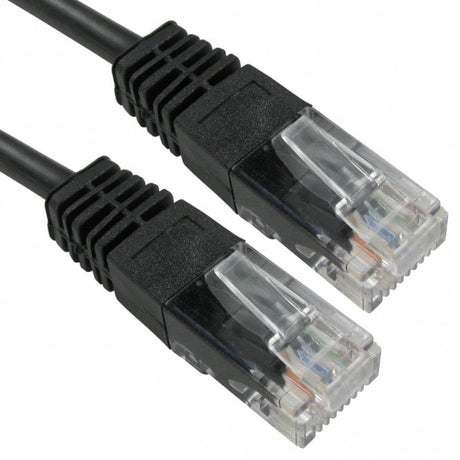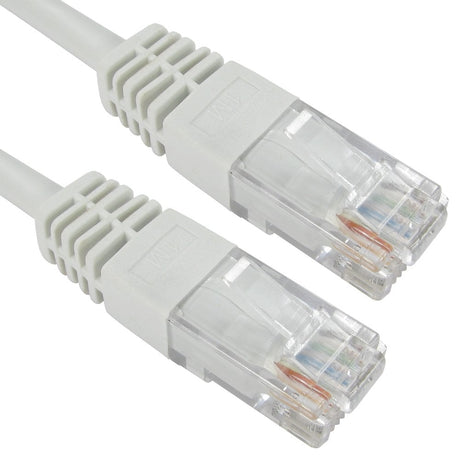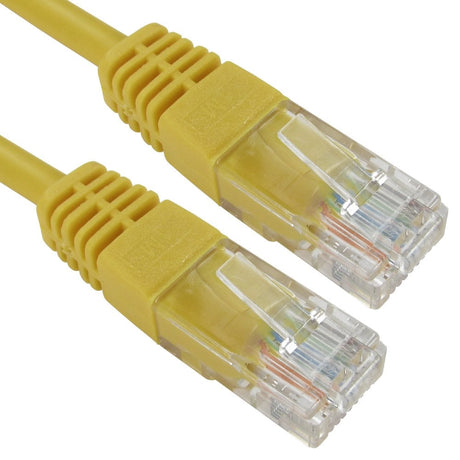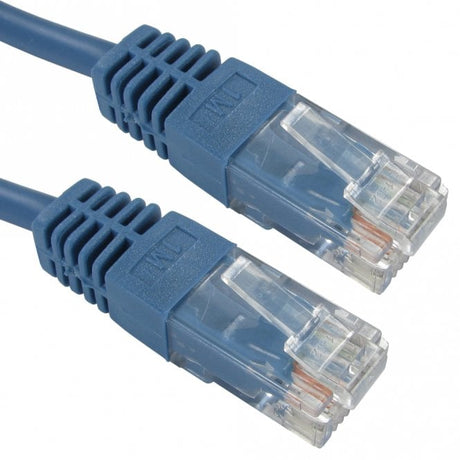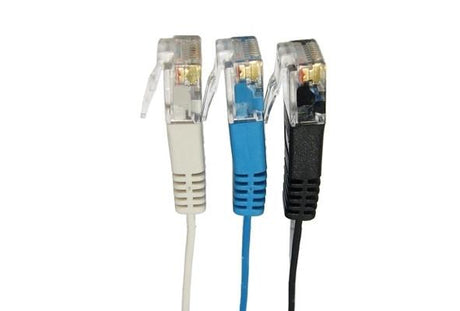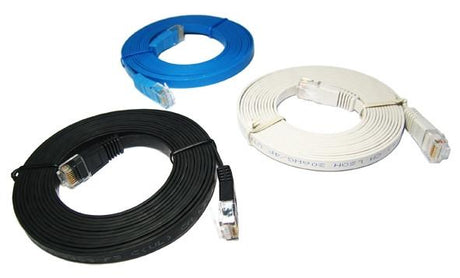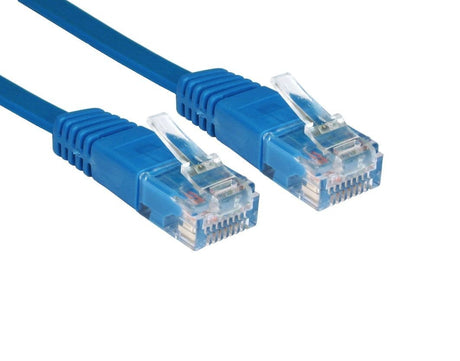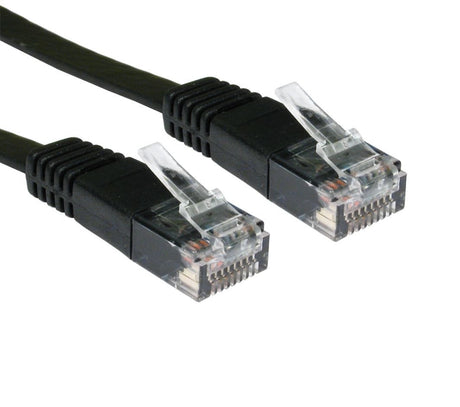-
Cat5e Patch Cables – UTP | 10 Colours | 0.15m–50m
Our best-selling Cat5e patch cables – reliable, colourful, and affordable. These full copper Cat5e Ethernet cables feature flush-moulded boots and are available in 10 colours and lengths from 0.15m to 50m. Perfect for home or office networks.From £0.45Unit price /Unavailable+3View detailsFrom £0.45Unit price /UnavailableVAT Included: £0.54Flat Cat5e Ethernet cables – ideal for tight spaces, carpets, and discreet installs. Our Cat5e Flat Patch Cables are full copper, low smoke zero halogen (LSZH), and feature a compact flat design. Perfect for home or office setups where standard round cables won’t fit. Available in 3 colours (Blue, White, Black) and lengths from 0.5m up to 30m.From £1.20Unit price /UnavailableView detailsFrom £1.20Unit price /UnavailableVAT Included: £1.44Cat5e Patch Cables Right Angled Up to Right Angled Down
Right angled RJ45 connectors reduce the stress on the ethernet cable and the position of the cable from the angle will either be going up or going down.Available in 0.5 mtrs, 1 mtr, 2 mtrs and 3 mtrsFrom £0.76Unit price /UnavailableView detailsFrom £0.76Unit price /UnavailableVAT Included: £0.91Cat5e Patch Cables Straight to Right Angled Down
Right angled RJ45 connectors avoid needless twining and reduce the stress on the ethernet cable.Available in 0.5mtrs, 1 mtr, 2 mtrs and 3 mtrsFrom £0.66Unit price /UnavailableView detailsFrom £0.66Unit price /UnavailableVAT Included: £0.79Cat5e Patch Cables Straight to Right Angled Up
The straight to right angled Cat5e ethernet cable is the perfect solution when space is limited and angled connectors are preferred. Available in black colour in from 0.5 mtrs, 1 mtr, 2 mtrs and 3 mtrsFrom £1.06Unit price /UnavailableView detailsFrom £1.06Unit price /UnavailableVAT Included: £1.27SaleShort Cat5e Patch Cables – 0.15m to 1m RJ45 Leads
Perfect for tidy installs, patch panels, and short-distance connections. Our short Cat5e patch cables are full copper, flush-moulded, and available in 10 colours — from just 0.15m to 1m. These compact RJ45 leads are ideal for tight spaces, delivering gigabit speeds without excess slack.From £0.39£0.56Unit price /Unavailable+3View detailsFrom £0.39£0.56Unit price /UnavailableVAT Included: £0.47Cat5e Patch Cables – 10 Colours | 0.15mtr – 50 mtr
Our best-selling Cat5e patch cables – reliable, colourful, and affordable. These full copper Cat5e Ethernet cables feature flush-moulded boots and are available in 10 colours and lengths from 0.15m to 50m. Perfect for home or office networks.From £0.45Unit price /Unavailable+3View detailsFrom £0.45Unit price /UnavailableVAT Included: £0.54DIFFERENCE BETWEEN CAT5 VS CAT5E CABLE
Cat5 and Cat5e are most popularly used cables in home networking and small Local Area Networks (LAN). These cables look very similar from outside, but they have some technical differences from inside. Cat5 (Category 5) cables are little slower and older cables which are probably now available with only old networking devices. Cat5e (Category 5 enhanced) cable is an improvement in Cat5 cable that supports faster speed with reliable data transmission. Cat5e is better than Cat5 because the crosstalk (interference) is reduced from the wires within the cable. Whether Cat5 or Cat5e, installing any one of them can practically affect the speed of your home network or LAN.
Here is some information about specifications of both the cables.CAT5 CABLE VS CAT5E CABLE: SPEED
Cat5 cable is capable of supporting network speed of 10 Mbps to 100 Mbps, which means these cables can support Ethernet and fast Ethernet. This cable is more prone to interference issues so the data transmission is not reliable even up to 100 Mbps. Cat5e cable is able to support network speed up to 1 Gbps (often called gigabit Ethernet). Cat5e is backward compatible so they can support Ethernet, fast Ethernet, and Gigabit Ethernet. Cat5e is faster than Cat5 cable and gives you a smoother experience.CAT5 CABLE VS CAT5E CABLE: SUPPORTED LENGTH
Both types of cables can support good data transfer rate up to 100m, after that the transfer rate drops out. You can install Cat5 and Cat5e cable longer than the recommended length, but you may experience deprived and unreliable data transmission while using them. Switches or repeaters can be used to amplify the signals and you may get good transmission up to 180m.CAT5 CABLE VS CAT5E CABLE: BANDWIDTH
The bandwidth is the information-carrying capacity of the cable. Cat5 can support 100 MHz frequency which is much lesser than Cat5e. The bandwidth supported by Cat5e is rated at 350 MHz that allows it to support the Gigabit Ethernet. So, Cat5e has a greater information-carrying capacity than Cat5 in a given period of time.CAT5 CABLE VS CAT5E CABLE: PERFORMANCE
The performance of Cat5 is satisfactory with greater potential of crosstalk. The crosstalk is the electrical interference that occurs when one wire’s signal affects another wire’s signal in a twisted pair. Cat5e cable had less crosstalk (interference) than Cat5. Due to low interference level in Cat5e, it supports more reliable data transfer than Cat5. So, Cat5 gives better performance in terms of reliable data transfer.CAT5 CABLE VS CAT5E CABLE: WIRING
Both Ethernet cables Cat5 and Cat5e use twisted pair wiring in solid and stranded variants. The main difference in Cat5 and Cat5e wiring is the tightness of the wire twisted. More the wire is tightly twisted; less would be the crosstalk interference. In Cat5e the wires are more tightly twisted to decrease the crosstalk between them.CAT5 CABLE VS CAT5E CABLE: FUTURE USE
The use of Cat5 cables is limited now. These cables don’t provide good network experience when faster internet speeds are needed. Cat5e are adequately used in Gigabit internet connections. But to support speed beyond 1 Gbps, Cat6 or Cat7 are recommended.
In a nutshell, Cat5 cables are still used in some old applications but, now almost all new installations are using Cat5e cables. Cat5e has improved signal capacity, less interference level, and better reliability than Cat5. Also, Cat5e is backward compatible so it can be used with old network devices. So with enhancements in design, Cat5e is more appropriate for most data cabling requirements.Compare /8
Loading...


